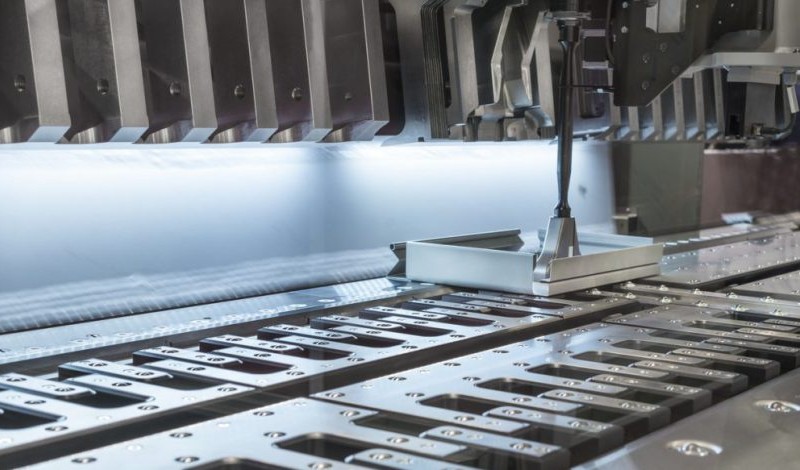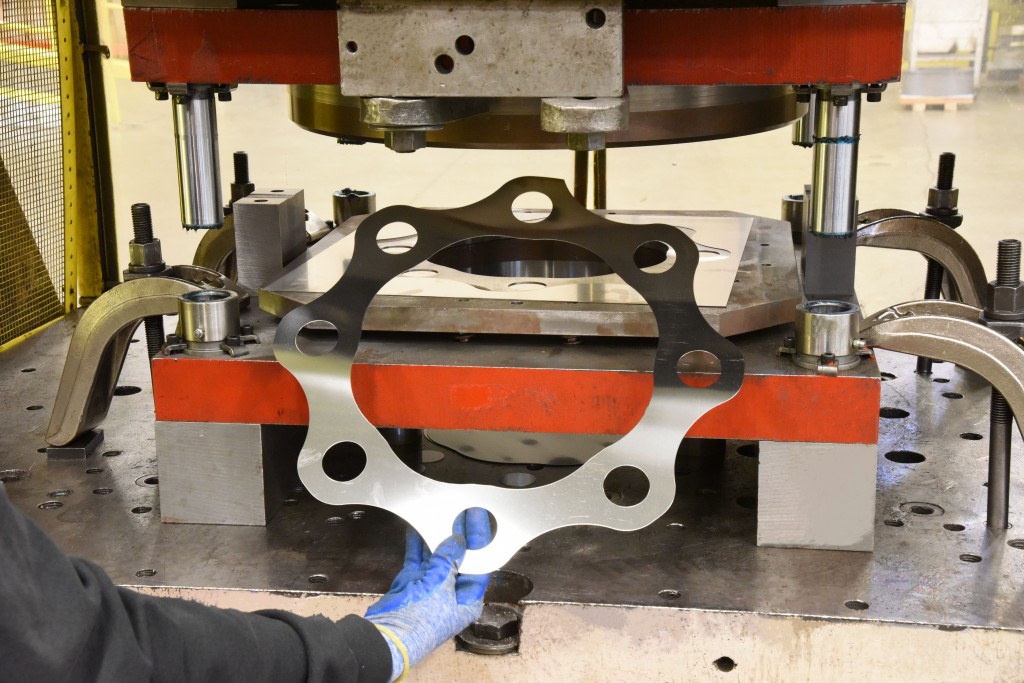Metal Marking Innovations: Elevating Manufacturing Processes for Superior Outcomes
In the realm of producing procedures, steel marking has long been a cornerstone method for producing a selection of accuracy components. Nevertheless, with the unrelenting march of technical development, the landscape of metal stamping is undergoing a substantial transformation. Innovations in this field are not just improving the effectiveness and high quality of manufacturing however are additionally leading the way for new opportunities that were formerly beyond reach. As the industry accepts these cutting-edge advancements, a redefinition of what is achievable in manufacturing is underway, appealing superior outcomes and setting brand-new standards for excellence in the field.
Evolution of Metal Stamping Methods

Furthermore, advancements in product scientific research have brought about the growth of high-strength alloys that can currently be perfectly marked into intricate forms, satisfying a wider variety of industrial applications. The assimilation of robotics and fabricated intelligence has even more enhanced the marking procedure by improving rate and precision while reducing the danger of human mistake.

Impact of Advanced Materials
Have innovative materials changed metal stamping processes substantially in the production sector? The solution is a definite yes (Metal Stamping). The assimilation of sophisticated products has changed metal marking, allowing manufacturers to achieve greater precision, increased performance, and enhanced item quality. By utilizing materials such as high-strength alloys, advanced compounds, and innovative coatings, metal stamping processes can now create components that are lighter, more powerful, and extra sturdy than in the past.
These advanced materials supply exceptional mechanical residential or commercial properties, deterioration resistance, and thermal security, permitting makers to meet the demands of modern markets such as aerospace, automobile, and electronic devices. Furthermore, the usage of innovative products in steel marking has facilitated the manufacturing of intricate geometries and intricate layouts that were previously unattainable with standard methods.
In addition, the application of sophisticated materials has caused reduced product waste, reduced manufacturing expenses, and shorter lead times, making steel stamping procedures more economical and lasting. As innovation remains to advancement, the effect of advanced products on metal marking procedures is anticipated to drive additional development and enhance the competitiveness of makers in the global market.
Automation in Steel Stamping
The advancement of metal stamping procedures driven by the assimilation of advanced materials has set the stage for substantial advancements in automation within the manufacturing market. Automation in steel stamping has actually reinvented manufacturing processes, boosting efficiency, accuracy, and overall outcome quality. With the utilization of robotics, sensing units, and computer-controlled systems, jobs that were lengthy and when manual can currently be performed with unmatched speed and accuracy.
Automation in metal stamping not only accelerates production rates yet also guarantees consistency in the production process. By minimizing human intervention, the threat of mistakes is dramatically reduced, causing higher levels of product harmony and integrity. Additionally, automation makes it possible for producers to undertake intricate marking jobs that would certainly be unwise or tough to accomplish by hand.
Moreover, automation in steel stamping adds to a much safer working environment by minimizing the need for staff members to participate in repeated or harmful jobs - Metal Stamping. This change in the direction of automation not just enhances performance but likewise leads the way for the future of production, where modern technology plays a main duty in driving functional quality
Quality Assurance and Evaluation Systems
With a focus on accuracy and integrity, quality control and examination systems play an important function in making certain product excellence in steel stamping procedures. These systems are made to check every stage of manufacturing, from material inspection to the last product, to assure that all components satisfy the needed requirements. By applying innovative modern technologies such as optical inspection systems, coordinate measuring home machines (CMM), and automated evaluating equipment, makers can detect even the smallest inconsistencies in dimensions, surface area high quality, and general stability of stamped parts.

Sustainability Practices in Steel Stamping
Building upon the foundation of accuracy and reliability established through quality assurance and assessment systems, the integration of lasting techniques in steel stamping processes is increasingly ending up being a prime focus for suppliers looking for to decrease environmental effect and optimize resource utilization. Sustainability methods in steel marking include a series of initiatives focused on minimizing waste generation, power intake, and greenhouse gas exhausts throughout the manufacturing process.
One key element of sustainability in metal marking is the fostering of environment-friendly materials and modern technologies that advertise recyclability and waste reduction. By using recycled products and applying energy-efficient equipment, suppliers can lower their carbon footprint and add to a much more sustainable manufacturing cycle. Furthermore, enhancing production procedures to reduce material waste and energy use not just benefits the setting however likewise results in cost financial savings for organizations in the future.
Moreover, the application of lasting practices in steel stamping can improve brand name credibility and attract environmentally mindful consumers. As sustainability remains to acquire relevance in the manufacturing sector, incorporating environmentally friendly efforts into metal marking processes is vital for long-lasting success and competitiveness on the market.
Conclusion
Finally, steel stamping strategies have significantly developed in time, including sophisticated materials and automation to enhance manufacturing processes. Quality control and evaluation systems play an essential duty in ensuring premium results, while sustainability practices are increasingly being executed to reduce environmental effect. These technologies in metal stamping have changed the sector, causing much more effective and lasting manufacturing methods for numerous sectors.
Steel marking, as soon as a manual and labor-intensive procedure, has actually transformed into an extremely automated and innovative method of shaping steel sheets right into various forms and styles.Have innovative materials changed metal marking procedures significantly in the manufacturing market? By utilizing materials such as high-strength alloys, advanced composites, this and cutting-edge coverings, steel marking processes can currently produce components that are lighter, more powerful, and much more resilient than ever in the past.
The development of metal marking procedures driven by the assimilation of innovative products has actually established the phase for substantial innovations in automation within the manufacturing market.In final thought, steel stamping strategies have actually considerably evolved over time, including sophisticated products and automation to boost producing processes.